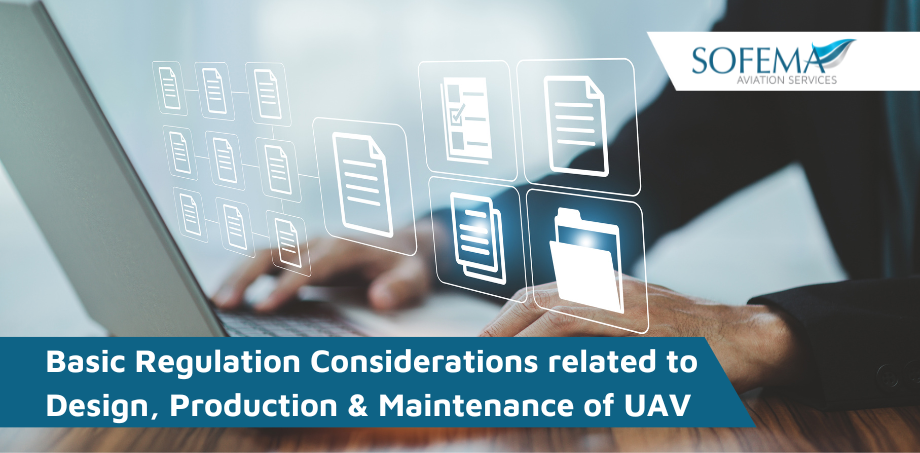Sofema Aviation Services (SAS) www.sassofia.com considers the airworthiness obligations which are placed on UAV design & manufacture as well as maintenance.
Airworthiness Considerations Introduction
- Unmanned aircraft must be designed in a way that, or contain features or details that, the safety of the person operating the unmanned aircraft or of third parties in the air or on the ground, including property, can be satisfactorily demonstrated.
- Unmanned aircraft must provide product integrity that is proportionate to the risk in all anticipated flight conditions.
- Unmanned aircraft must be safely controllable and maneuverable, as necessary under all anticipated operating conditions including following the failure of one or, if appropriate, more systems.
- Due account must be taken of human-factor considerations, in particular available knowledge about factors conducive to the safe operation of technology by humans.
- Unmanned aircraft and their engines, propellers, parts, non-installed equipment, and equipment to control the unmanned aircraft remotely must function as intended under any foreseeable operating conditions, throughout, and sufficiently beyond, the operation for which the aircraft was designed.
- Unmanned aircraft and their engines, propellers, parts, non-installed equipment, and equipment to control the unmanned aircraft remotely, considered separately and in relation to each other, must be designed such that the probability of a failure condition and the severity of its effect on people on the ground and other airspace users are mitigated on the basis of the principles laid down in Article 4(2).
- Any equipment to control the unmanned aircraft remotely involved in the operation must be so as to facilitate flight operations, including means of providing situational awareness, and management of any expected situation and emergencies.
- Organisations involved in the design of unmanned aircraft, engines, and propellers must take precautions so as to minimize the hazards arising from conditions, both internal and external to the unmanned aircraft and their systems, that experience has shown to have a safety impact. This includes protection against interference by electronic means.
- The manufacturing processes, materials, and components used to produce the unmanned aircraft must result in adequate and reproducible properties and performance that are compliant with the design properties.
Organisation Requirements
Organisations involved in unmanned aircraft design, production, maintenance, operations, related services, and training shall meet the following conditions:
- The organisation must have all the means necessary for the scope of its work and ensure compliance with the essential requirements and the delegated act referred to in Article 58 and the implementing acts referred to in Article 57, relevant to its activity;
- The organisation must implement and maintain a management system to ensure compliance with the relevant essential requirements, manage safety risks, and aim for continuous improvement of this system.
- Such management system must be proportionate to the organisation’s type of activity and size.
- The organisation must establish an occurrence reporting system, as part of the safety management system, in order to contribute to the continuous improvement of safety. Such reporting system must be proportionate to the organisation’s type of activity and size.
- The organisation must establish arrangements, where relevant, with other organisations to ensure continuing compliance with the relevant essential requirements.
Next Steps
Follow this link to our Library to find & Download related documents for Free.
Sofema Aviation Services (SAS) www.sassofia.com and Sofema Online (SOL) www.sofemaonline.com provide classroom, webinar & online EASA regulatory compliant & vocational training. For additional information, please visit our websites or email team@sassofia.com




